By Ramesh Kebbehundi
Pics. by M.N. Lakshminarayana Yadav
The ongoing repair and renovation of the iconic St. Philomena’s Church which has the distinction of being the second largest Church in Asia has almost reached finishing stage and is scheduled to be completed for this Christmas, or maximum by Jan. 15, 2019.
The second phase of works that began on March 28, 2016 and that was to be completed within 18 months has now reached the completion stage after initial hiccups including scarcity of labour and other technical and teething problems.
The first phase of renovation work was taken up by the Department of Tourism at a cost of Rs. 50 lakh in 2014. The government sanctioned Rs. 2.7 crore for the second phase of works for the conservation of the majestic Church for which the foundation was laid in 1933 and was constructed in 1936. The structure was crying for attention because of many years of dust and dirt accumulation.
ACCUMULATED DUST
Like the Taj Mahal in Agra which is fast losing its lustre due to pollution, St. Philomena’s Church has lost much of its charm due to accumulated dust, growth of vegetation and lack of maintenance. The outer structure had turned black and grey because of pollution. Now it is being restored by the Department of archaeology, Museums and Heritage.
Built in the Neo-Gothic style of architecture, St Philomena’s Church is a replica of the Cologne Cathedral in Germany and St. Patricks Cathedral in New York. The twin towers of the Church are 180 feet (55 metres) tall, making it the tallest structure in Mysuru even today, attracting thousands of tourists every year after Mysore Palace.
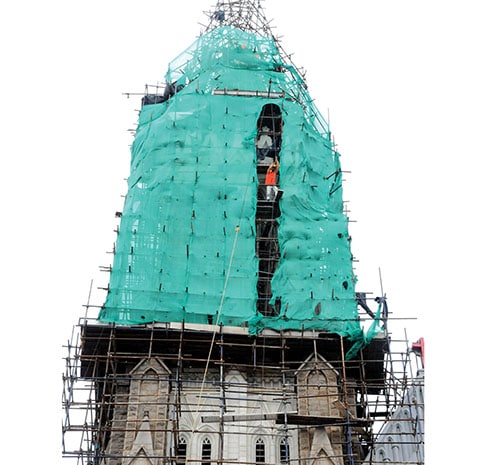
PREVIOUS EXPERIENCE
The project executing Department of Archaeology, Museum and Heritage — being the project technical consultant — has awarded the repair and renovation contract works to Mumbai-based Savani Construction Company Pvt. Ltd, which has a reputation of successfully restoring palaces, city gates, temples and churches.
This company has recently undertaken the renovation works of Chamarajeshwara Temple in Chamarajanagar which is one of oldest historic temples in Karnataka. The second stage of repair works includes strengthening the weakening walls, plug rainwater leakage from the roof and to replace stained glass, plastering of twin towers, electrical wiring.
“Over 90 per cent of the work has been completed without compromising on the architectural design and profile of the structure. Works of the interior portion of the Church was completed last year,” says Rev. Fr. N.T. Joseph, Parish Priest of St. Joseph’s Cathedral (St. Philomena’s Church).
Repairs have been taken up in consultation with Church Building Committee comprising engineers, consultants, architects, and prominent citizens of Mysuru.
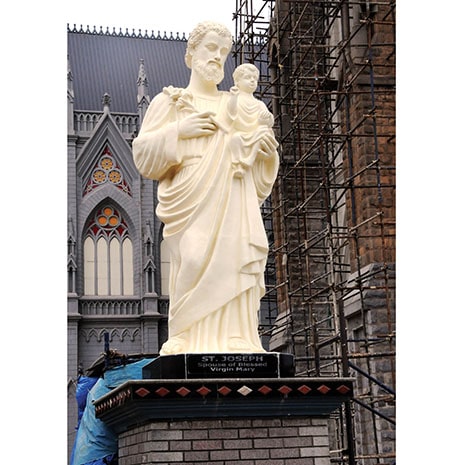
DELICATE MINARS
“When the restoration works began, the Minars were so delicate that they would shake if one touched them. The Church was built using stones on the sides of the twin towers and bricks and concrete at other places. Skilled workers, painters, masons from Bihar, West Bengal, Orissa and Rajasthan started off painstakingly removing the plaster on the walls and replaced damaged and worn out granite stones with new ones and stone masonry works were undertaken,” said R. Pramod, the project manager.
He said that the intricately carved wooden doors had become virtually invisible owing to dust deposits and had also developed cracks. The doors now wear a new look with a fresh coat of painting, making them sparkle. He said lime mortar was used for plastering interiors and exteriors.
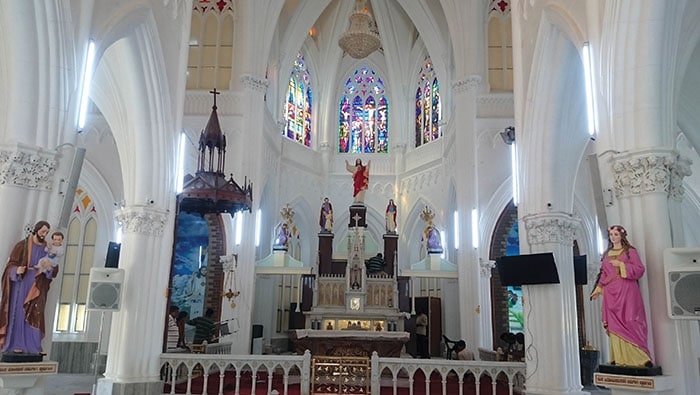
‘ARAISH’ TECHNIQUE
As per the instructions from archaeology officials, the firm restored the Church adopting the ‘Araish’ technique that is in vogue in Rajasthan since centuries. “This technique was used during the reign of Maharaja Rana Pratap Singh (1779-1803), the erstwhile ruler of Amber and Jaipur of Rajasthan. It makes the wall surface shine even reflecting the face of the viewer and has a glossy and crack-free surface. This technique has been applied on a wide range of surfaces and has withstood extreme climatic conditions in arid and semi-arid regions for centuries,” said Pramod.
OWN MORTAR PLANT
To keep the restoration work going, Savani Heritage Conservation has set up its own plant to prepare lime mortar in the church premises. Skilled labourers prepare the material to plaster the church walls using lime slurry, fine sand, raw jaggery, methi, urad dal, eggs and soap nuts. Jaggery syrup mixed with lime mortar makes the plaster stronger. They then apply the preparation to plaster the walls.
FIXING INTER-LOCKING TILES
Pramod, who is overseeing the repair and renovation works of the Church, said that currently, labourers are plastering the remaining portions of the twin towers. The exterior portion of the works will be finished by this year’s Christmas celebrations.
Pending final touches works like stone washing, water-proofing and dusting will be completed after Christmas. The firm will finish all restoration works by Jan 15, 2019 and the keys will be handed over after submitting a project completion report to Archaeology and Museums Department.
The agency had submitted a proposal of Rs. 48 lakh for fixing interlocking tiles surrounding the Church and water-proofing works and they will be completed after obtaining approval.
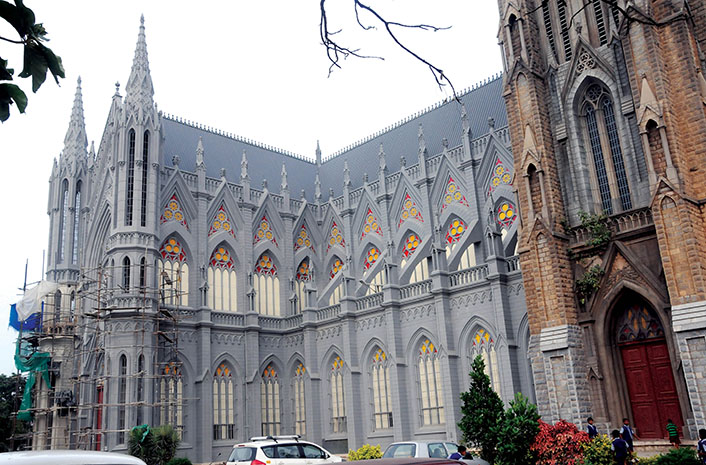
Proposal to install stained glass sent to govt.
Sources in the Archaeology Department told Star of Mysore that the Archaeology and Museums Department had received a proposal to install religious and artistic stained glass by replacing the existing old glass windows. This proposal, costing over Rs. 2 crore, has been forwarded to higher authorities of State Tourism Department and is pending approval.
Plans are to install stained glasses with scenes depicting the life and history of Jesus Christ, various angels and saints, last supper, the crucifixion, the resurrection, the ascension of Christ and his baptism to inspire Church visitors.
Sources said that the Department of Archaeology was also toying with the idea of installation of coloured glass windows in case stained glass cannot be installed as it as it is expensive.
During the Gothic period and the Renaissance, stained glass was one of the foremost techniques of painting practiced in Europe. It may seem surprising to call stained glass a form of painting, but in fact it is.
One of the most widespread forms of painting, stained glass, has inspired the lives of the faithful through religious narratives in churches and cloisters, celebrated family and political ties in city halls, and even decorated the windows of private houses.
As the Philomena’s Church was constructed in Gothic style – Victorian style of architecture, the Department may take this decision of installation of stained or coloured glass only after the completion of all ongoing exterior works.



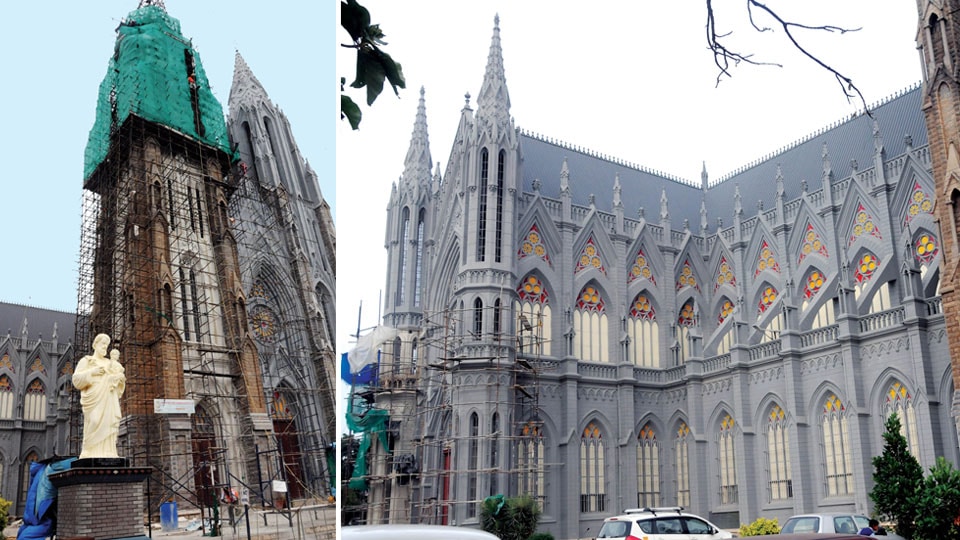

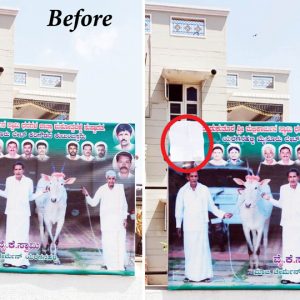


Recent Comments